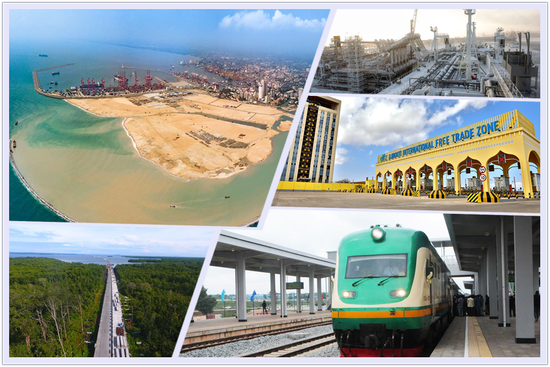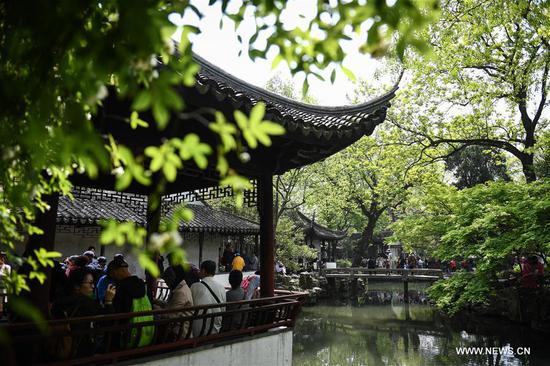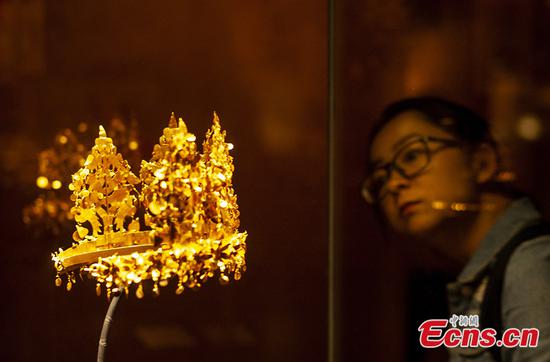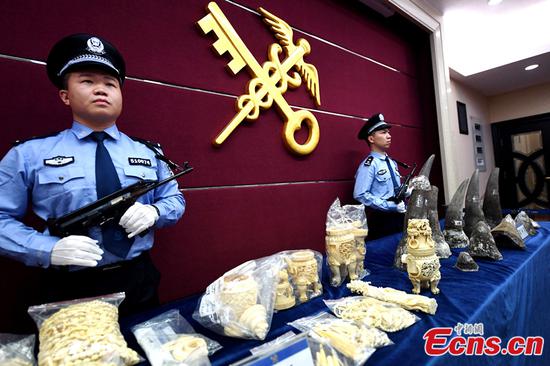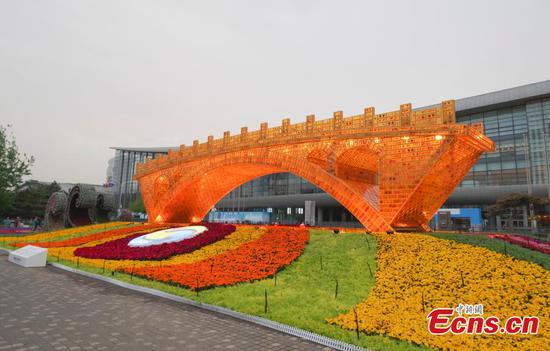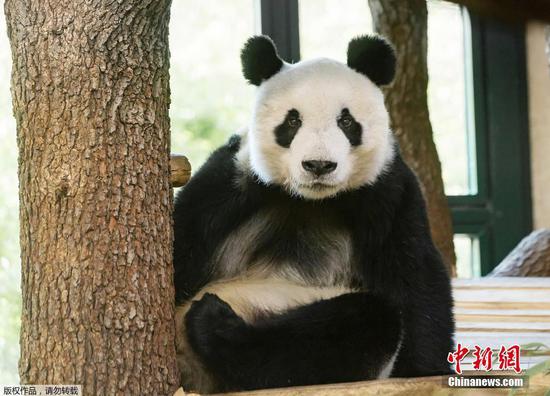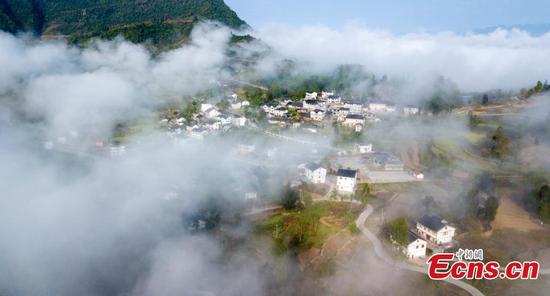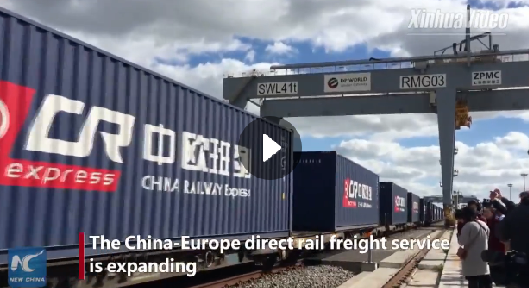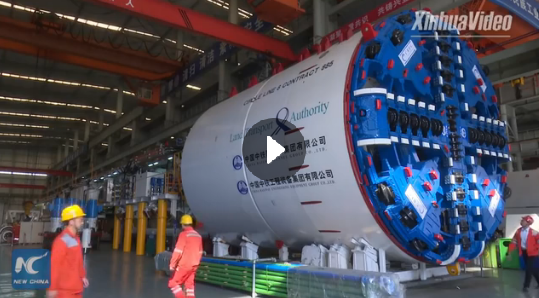
Chinese experts and local employees check the growth of mushrooms. (Photo: Xinhua/Zhang Yongxing)
Juncao has spread rapidly to more than 100 countries along the BRI
In Lesotho in southern Africa, a song was widely hummed by local women: "Some people say it is a wild crop, some people say it is the economic lifeline. Oh, see this crop, an amazing crop. It is food, medicine and hope."
The song, whose title means Seven-Day Mushroom in the Lesotho language, was written by women from Mabote Mushroom Association of Lesotho, and what it described is China's Juncao technology.
In Chinese, jun refers to mushrooms or fungi and cao means grass or herbaceous plant. When the two characters are put together, it refers to a technology that grows nutritious mushrooms using chopped grasses without cutting trees.
Juncao technology was invented by Chinese scientist Lin Zhanxi in 1986.
Lin said in the 1980s, the mushroom industry developed rapidly in China and became an important way for farmers to get escape poverty and gain a better living. Farmers cut down as many trees as they could, even small trees, to cultivate edible and medicinal mushrooms.
To avoid the conflict between mushroom industry development and forest resources protection, Lin started research in 1983, trying to find a sustainable way for the mushroom industry, testing on wild grass instead of wood logs or the sawdust of broad-leaved trees as mushroom substrate. Lin succeeded three years later, which led to the invention of Juncao technology.
With a history of progressive growth in 33 years, "Juncao industry gradually takes shape, with Juncao grass as the core, integrating its multiple and comprehensive applications as mushroom substrate, feed, fertilizer, biofuel, biomaterials, environment treatment and ecological control, and promotes sustainable development," Lin said.
He soke at a high-level meeting, Juncao Technology: Concrete Contribution of the Belt and Road Initiative toward Synergies with the 2030 Agenda for Sustainable Development, at the United Nations headquarters in New York on Thursday.
In 2013, when China proposed the Belt and Road Initiative, or BRI, eco-environmental protection was put forward as the integral part of the BRI.
And as a practical technology for green Belt and Road, Juncao technology has spread rapidly to more than 100 countries along the Belt and Road.
The application of Juncao technology has helped BRI countries and regions meet Sustainable Development Goals, or SDGs, such as eliminating poverty and hunger, promoting food security, ensuring and increasing employment, tackling climate change and protecting the ecological environment, and helps the people get rid of poverty and live a better life, said Ma Zhaoxu, China's permanent representative to the UN.
Ma said, in 2017, under China-UN Peace and Development Fund announced by President Xi Jinping, a Juncao technology project was implemented. Through training courses, seminars and production demonstration, the project helps many developing countries strengthen capacity in implementing SDGs, thus making concrete contribution to synergies between the BRI and the 2030 Agenda for Sustainable Development.
Lin said the reason why Juncao technology could spread so fast in the BRI countries is because of its unique advantages.
"Rich and untapped resources of Juncao grass (herbaceous plants) and mushroom species can be found in most of those countries," said Lin, and "its flexible production models enable subsistence farmers or small farmers' participation, as well as factory scale production with large investment".
Mahala Molapo, minister of Agriculture and Food Security of Lesotho, described during the meeting that Juncao technology was first introduced into Lesotho through the China-Lesotho Juncao Technology Technical Cooperation Project in 2007.
Molapo said the majority of the population in Lesotho live in rural areas and derive a livelihood from small-scale farming. The agriculture sector is therefore an important source of employment.
"Mushroom production needs small amount of capital investment using the locally available substrates for its production. It makes quick and good returns, as it requires a small space and takes a few days to grow and reach maturity. It can be produced well in the peri-urban and rural areas," he said.
Currently, 54 species of mushrooms can be cultivated with Juncao grass. The mushrooms contain 30 percent to 45 percent crude protein, 4 percent to 7 percent crude polysaccharides and a variety of effective substances, which are beneficial to human health, according to data from Fujian Agriculture and Forestry University, where is the birthplace of Juncao technology.
On average, farmers can generate income from 7 to 10 days after planting mushroom substrate packs and 1,200 kilos fresh mushroom can be produced in 10-square meters in a year.
In other words, as described in the song Seven-Day Mushroom: "I planted on last Thursday, taking care just like a child. Today is Friday, I harvest, I cook the mushroom and I even sell. Hurry, or you will be sorry."
According to a Fujian university report, the annual output value of a 1-hectare Juncao mushroom farm is about $300,000, which can support at least 30 jobs.
Molapoalso illustrated other benefits of mushrooms, including the medicinal and nutritional attributes that can help with addressing the high rate of malnutrition in Lesotho and contribute toward better health of the Lesotho people.
Molapo told the meeting that since 2007, Chinese mushroom experts have come to Lesotho in batches to give guidance and trainings to local mushroom technicians and farmers.
Fujian Agriculture and Forestry University, which has China's only national Engineering Research Center of Juncao Technology, has guided and supported the scientific research and application.
Currently, the university has disseminated Juncao technology in 106 countries, and has established collaboration with 71 institutions in 41 countries. It has conducted 202 international training courses, which attracted 7,817 participants from over 100 countries, and offered postgraduate scholarships on Juncao technology to 21 students from 11 countries.
In the Pacific Island countries, Juncao technology not only provides high-protein foods, but also effectively alleviates the shortage of forage, which promotes the development of animal husbandry, and improves the living standards of farmers.
In 2019, the Ministry of Agriculture of Fiji announced, "optimizing the use of Juncao grass to enhance livestock production" as one of the five initiatives. Local livestock companies like Yaqara Pastoral Co. have planted Juncao grass as green fodder for the dry season.












